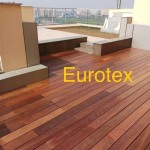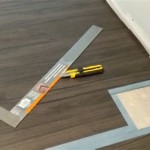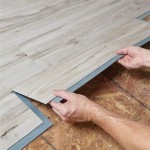Stainmaster PetProtect Vinyl Flooring Reviews: A Comprehensive Analysis
Stainmaster has long been a recognized brand in the flooring industry, synonymous with durability and stain resistance. Their PetProtect vinyl flooring line aims to extend these qualities to households with pets, addressing common concerns such as scratches, accidents, and lingering odors. This article provides a thorough review of Stainmaster PetProtect vinyl flooring, focusing on its features, performance, installation, maintenance, and overall value proposition. The analysis draws upon user reviews, expert opinions, and technical specifications to offer a balanced perspective.
Vinyl flooring, as a category, has seen significant advancements in recent years. High-definition printing technologies allow for realistic replication of wood, stone, and tile appearances. Improved manufacturing processes have also led to enhanced durability and water resistance. Stainmaster PetProtect vinyl flooring leverages these advancements, specifically targeting the challenges presented by pet ownership.
Key Feature 1: Enhanced Scratch and Dent Resistance
A primary concern for pet owners considering new flooring is scratch resistance. Pets, especially dogs with their nails, can easily damage traditional flooring materials. Stainmaster PetProtect vinyl flooring addresses this concern through the incorporation of a robust wear layer. This wear layer, typically measured in mils (thousandths of an inch), serves as a protective barrier against scratches, scuffs, and dents. Stainmaster PetProtect floors generally feature a thicker wear layer compared to standard vinyl flooring, contributing to their enhanced durability.
The effectiveness of the wear layer is directly related to its thickness and composition. Thicker wear layers offer greater protection, while the specific materials used in the composition can further enhance scratch resistance. Stainmaster PetProtect vinyl often utilizes a combination of polyurethane and other protective coatings to achieve optimal performance in this area. Testing standards, such as the Taber Abrasion Test, are used to evaluate the wear resistance of flooring materials. These tests simulate the wear and tear that floors experience under normal use.
User reviews often highlight the scratch resistance of Stainmaster PetProtect vinyl. Many pet owners report minimal to no visible scratches even after prolonged exposure to pets with active lifestyles. However, it's important to note that no flooring is completely impervious to damage. Significant impacts or sharp objects can still cause scratches or dents, even on Stainmaster PetProtect vinyl. Regular maintenance, such as trimming pet nails and using furniture pads, can further minimize the risk of damage.
Beyond scratch resistance, the flooring's ability to resist dents is also crucial. Dropped objects, heavy furniture, or even the constant weight of a large dog can cause dents in softer flooring materials. The rigid core construction of Stainmaster PetProtect vinyl flooring contributes to its dent resistance. This rigid core provides a stable and supportive base, distributing weight and minimizing the risk of indentation. The specific composition of the rigid core can vary, but it often includes materials such as stone plastic composite (SPC) or wood plastic composite (WPC), known for their strength and stability.
Key Feature 2: Superior Waterproofing and Stain Resistance
Pet accidents are an inevitable part of pet ownership. Urine, vomit, and spilled food can quickly damage flooring if not promptly addressed. Stainmaster PetProtect vinyl flooring is specifically designed to be waterproof, preventing liquids from seeping into the subfloor. This is a critical advantage over materials like hardwood or laminate, which can be susceptible to water damage and mold growth.
The waterproof nature of Stainmaster PetProtect vinyl stems from its construction. The vinyl layers themselves are inherently waterproof, and the tight seams created during installation further prevent water penetration. This is particularly important for click-lock vinyl flooring, where the interlocking edges need to create a secure and watertight seal. Stainmaster PetProtect flooring often incorporates enhanced locking mechanisms to ensure a tight fit and minimize the risk of leaks.
Stain resistance is another key attribute of Stainmaster PetProtect vinyl. The surface of the flooring is treated with a stain-resistant coating, making it easier to clean up spills and prevent permanent discoloration. This coating helps to repel liquids and prevent them from penetrating the surface, allowing for easy removal with a damp cloth or mop. The effectiveness of the stain-resistant coating is often tested using various staining agents, such as coffee, wine, and pet urine.
User reviews consistently praise the stain resistance of Stainmaster PetProtect vinyl. Pet owners report that spills and accidents are easily cleaned up without leaving behind any lasting stains or odors. This is a significant advantage compared to carpeting, which can be difficult to clean and often retains odors even after cleaning. The waterproof and stain-resistant properties of Stainmaster PetProtect vinyl contribute to a healthier and more hygienic living environment for both pets and their owners.
Proper cleaning practices are essential for maintaining the stain resistance of Stainmaster PetProtect vinyl. While the flooring is designed to be stain-resistant, it's still important to clean up spills promptly. Avoid using harsh chemicals or abrasive cleaners, as these can damage the stain-resistant coating. Instead, opt for mild detergents and gentle cleaning methods. Regular sweeping or vacuuming can also help to prevent dirt and debris from accumulating on the surface, further reducing the risk of stains.
Key Feature 3: Odor Control Technology
Pet odors can be a persistent problem in homes with pets. Even with regular cleaning, lingering odors can permeate carpets, upholstery, and other flooring materials. Stainmaster PetProtect vinyl flooring incorporates odor control technology to help neutralize pet odors and create a fresher-smelling environment. This technology works by inhibiting the growth of bacteria that cause odors, effectively reducing the source of the problem.
The specific odor control technology used in Stainmaster PetProtect vinyl can vary. Some products utilize antimicrobial agents that are embedded in the flooring material, while others employ surface treatments that neutralize odor-causing molecules. These technologies are designed to provide long-lasting odor control, even after repeated exposure to pet accidents. The effectiveness of the odor control technology is often tested using standardized methods to measure its ability to reduce odor levels.
User reviews on the odor control capabilities of Stainmaster PetProtect vinyl vary. Some users report a noticeable reduction in pet odors, particularly in areas where accidents are common. Others find the odor control to be less effective, especially in homes with multiple pets or pets with strong odors. The effectiveness of the odor control technology can also be influenced by other factors, such as ventilation, cleaning practices, and the type of pet. Regular cleaning and proper ventilation can help to maximize the effectiveness of the odor control technology.
While Stainmaster PetProtect vinyl flooring can help to reduce pet odors, it's not a complete solution. Regular cleaning and maintenance are still essential for maintaining a fresh-smelling environment. In addition to cleaning up accidents promptly, it's also important to regularly vacuum or mop the floor to remove dirt, debris, and pet dander. Using pet-friendly cleaning products can also help to neutralize odors and prevent them from accumulating. Air purifiers can also be used to further improve air quality and reduce odors in the home.
Installation Considerations
The installation process for Stainmaster PetProtect vinyl flooring can vary depending on the specific product and the type of subfloor. Many Stainmaster PetProtect vinyl floors are designed for DIY installation, featuring click-lock systems that allow for easy and secure connections. However, professional installation is often recommended, particularly for larger areas or complex layouts. Professional installers have the expertise and tools to ensure a properly installed floor, minimizing the risk of problems such as gaps, uneven seams, or moisture issues.
Proper subfloor preparation is crucial for a successful installation. The subfloor should be clean, level, and dry. Any imperfections in the subfloor, such as cracks or unevenness, should be addressed before installing the vinyl flooring. In some cases, a self-leveling compound may be required to create a smooth and even surface. Moisture testing is also important, as excessive moisture can damage the vinyl flooring and lead to mold growth.
Click-lock vinyl flooring is generally easier to install than glue-down vinyl flooring. The interlocking edges of the planks or tiles simply click together, creating a floating floor that is not directly attached to the subfloor. Glue-down vinyl flooring, on the other hand, requires the use of an adhesive to secure the flooring to the subfloor. This type of installation can be more complex and requires specialized tools and techniques. However, glue-down vinyl flooring can provide a more permanent and secure installation, particularly in areas with high traffic or moisture.
Cutting vinyl flooring can be done using a utility knife and a straight edge. However, specialized vinyl flooring cutters are also available, which can provide cleaner and more precise cuts. When cutting vinyl flooring, it's important to follow safety precautions, such as wearing gloves and eye protection. It's also important to avoid cutting through the underlayment, if one is being used.
Maintenance and Care
Maintaining Stainmaster PetProtect vinyl flooring is relatively simple. Regular sweeping or vacuuming is recommended to remove dirt, debris, and pet dander. A damp mop with a mild detergent can be used to clean the floor on a regular basis. Avoid using harsh chemicals or abrasive cleaners, as these can damage the surface of the flooring. It's also important to avoid using excessive amounts of water, as this can seep into the seams and cause damage to the subfloor.
For stubborn stains, a specialized vinyl flooring cleaner may be used. However, it's important to test the cleaner in an inconspicuous area first to ensure that it doesn't damage the flooring. Always follow the manufacturer's instructions when using any cleaning product. For scuffs and scratches, a vinyl flooring scratch repair kit may be used. These kits typically contain a filler that can be used to repair minor damage.
Preventative measures can also help to extend the life of Stainmaster PetProtect vinyl flooring. Using furniture pads under heavy furniture can help to prevent dents and scratches. Placing mats at entrances can help to trap dirt and debris before it gets tracked onto the floor. Trimming pet nails regularly can also help to minimize scratches. By following these simple maintenance tips, you can keep your Stainmaster PetProtect vinyl flooring looking its best for years to come.

Stainmaster Luxury Vinyl Reviews Is It Worth Floorings

Stainmaster Luxury Vinyl Reviews Is It Worth Floorings

The Before And After Of Our Stainmaster Luxury Vinyl Install Within Grove

Stainmaster Petprotect Sample Trelawney Grey Oak Waterproof Wood Look Interlocking Luxury Vinyl Plank In The Flooring Samples Department At Com

Why We Went With Stainmaster Petprotect Luxury Vinyl Q A Within The Grove

Stainmaster Petprotect Sample Willow Waterproof Wood Look Interlocking Luxury Vinyl Plank In The Flooring Samples Department At Com

Stainmaster Barnes Oak Lsm02 920 Flooring Review Consumer Reports

Stainmaster Petprotect Vinyl Flooring At Com

The Before And After Of Our Stainmaster Luxury Vinyl Install Within Grove

Stainmaster Petprotect Arcadian Oak Luxury Vinyl Plank Flooring
Related Posts








